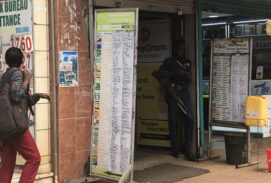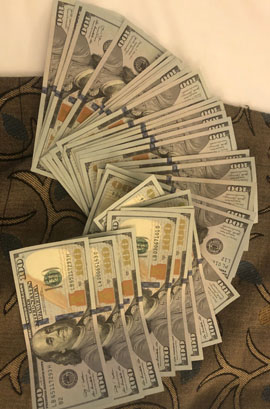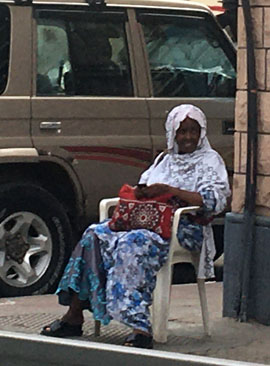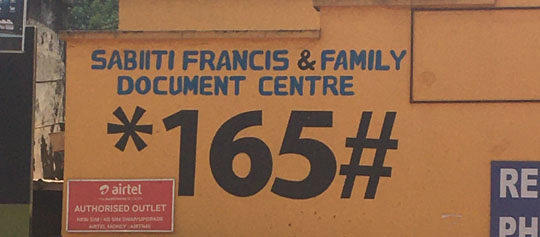Money in Africa
Tuesday, 9 August 2022Travel almost always brings up some sort of money stories and my recent journey through Uganda, Somaliland and Djibouti certainly did.
Somaliland Money Troubles
The problem with money and Somaliland is it gets confused with Somalia and for all the standard banking reasons – terrorism, money laundering, etc – sending money to Somalia can be difficult. My travels in Somaliland and Djibouti were all organized by Somaliland Travel Agency. Very efficiently as well, from their office in Hargeisa, the capital of Somaliland, they booked all my hotels, organized a car and driver/guide to convey me around the two countries, sorted out the Covid tests I needed on arrival and departure, even booked my flight with Air Djibouti between the two countries.
‘Please send us US$815 deposit to our bank account in the Netherlands,’ they politely requested. ‘The balance you can pay in US dollars cash when you arrive.’ Fine, I thought, but OFX who usually handle my international transactions quietly and efficiently, flat out refused. ‘We don’t deal with Somalia,’ they said. Ignoring the fact that the account was in the Netherlands and the office was in Somaliland, not Somalia.
So I turned to Commonwealth Bank and they paid the US$815 so promptly that I decided to pay another US$1400 right now, rather than have to carry all those US dollars around Uganda for two weeks. Off I went to Uganda and 12 days after I’d paid that deposit my bank announced that for ‘internal policy’ reasons they had decided not to pay the money after all and had put it back in my account. Presumably ‘internal policy’ also had something to do with dealing with a distasteful country like Somalia. So what to do, how was I going to pay Somaliland Travel Agency when I arrived in Hargeisa in 8 days time?
 ◄ The answer was to go from one ATM machine to another and withdraw Ugandan shillings. Some ATMs had a withdrawal limit of one million shillings, about US$260, but I soon had all the shillings I needed and when I got to Kampala I visited the High Savings Forex Bureau and converted all my shillings into crisp US$100 notes. My daypack was suddenly much lighter, it takes lots of Ugandan shilling notes to make US$1000.
◄ The answer was to go from one ATM machine to another and withdraw Ugandan shillings. Some ATMs had a withdrawal limit of one million shillings, about US$260, but I soon had all the shillings I needed and when I got to Kampala I visited the High Savings Forex Bureau and converted all my shillings into crisp US$100 notes. My daypack was suddenly much lighter, it takes lots of Ugandan shilling notes to make US$1000.
 ◄ Crisp US$100 notes – how often do you see a US$100 note in the US? I’ve actually seen signs in US shops that they don’t accept those big untrustworthy bills. The reality is most US$100 notes aren’t in the USA, there’s certainly no shortage of them in Africa. US$20 notes, on the other hand, are only accepted with great care. Forget it if your US$20 is pre-2006 and forget it if it’s scruffy or has even a small nick or tear.
◄ Crisp US$100 notes – how often do you see a US$100 note in the US? I’ve actually seen signs in US shops that they don’t accept those big untrustworthy bills. The reality is most US$100 notes aren’t in the USA, there’s certainly no shortage of them in Africa. US$20 notes, on the other hand, are only accepted with great care. Forget it if your US$20 is pre-2006 and forget it if it’s scruffy or has even a small nick or tear.
When I arrived in Hargeisa, however, I discovered that the ‘country’ had now joined the international banking network. There was an ATM right outside my hotel and a US$100 test withdrawal worked from both my Australian ANZ and my Australian Westpac accounts. So much for not dealing with Somalia.
 ◄ Djibouti was a different story. The exchange rate is US$1 equals 178 Djibouti francs, there’s no black market and ATMs dispense the local currency without any problems. Despite which a lot of people prefer to change money on the street. If you need Djibouti francs just look for a respectable looking older women sitting on a plastic chair at a street corner with a bag on their knee. It’s a bag full of money, pull up beside them, tell them – or their assistant, it’s often two respectable looking ladies – how much you want to change and the local cash is pulled out of the bag. It’s always women, however, this is strictly a female occupation.
◄ Djibouti was a different story. The exchange rate is US$1 equals 178 Djibouti francs, there’s no black market and ATMs dispense the local currency without any problems. Despite which a lot of people prefer to change money on the street. If you need Djibouti francs just look for a respectable looking older women sitting on a plastic chair at a street corner with a bag on their knee. It’s a bag full of money, pull up beside them, tell them – or their assistant, it’s often two respectable looking ladies – how much you want to change and the local cash is pulled out of the bag. It’s always women, however, this is strictly a female occupation.
 ▲ Mobile money in Africa kicked off in Kenya with M-Pesa. Launched in 2007 there are now about 70 million M-Pesa accounts in Kenya, for a population of 54 million. Mobile money has been a huge success in Africa, the technology and scale has been far ahead of anything comparable in Europe or the Americas. The fact that most people didn’t have bank accounts or landlines meant it was untouched territory for a financial system that allows you to pay people direct from your phone or to withdraw money at anywhere handling M-Pesa. In Nairobi, the capital of Kenya, for example, everybody working for the city public transport system – all those bus drivers and conductors – are paid directly to their phones. In Uganda *165# painted on the front of any shop or business means you can walk in and withdraw cash directly from your phone if you’re on the MTN network.
▲ Mobile money in Africa kicked off in Kenya with M-Pesa. Launched in 2007 there are now about 70 million M-Pesa accounts in Kenya, for a population of 54 million. Mobile money has been a huge success in Africa, the technology and scale has been far ahead of anything comparable in Europe or the Americas. The fact that most people didn’t have bank accounts or landlines meant it was untouched territory for a financial system that allows you to pay people direct from your phone or to withdraw money at anywhere handling M-Pesa. In Nairobi, the capital of Kenya, for example, everybody working for the city public transport system – all those bus drivers and conductors – are paid directly to their phones. In Uganda *165# painted on the front of any shop or business means you can walk in and withdraw cash directly from your phone if you’re on the MTN network.






